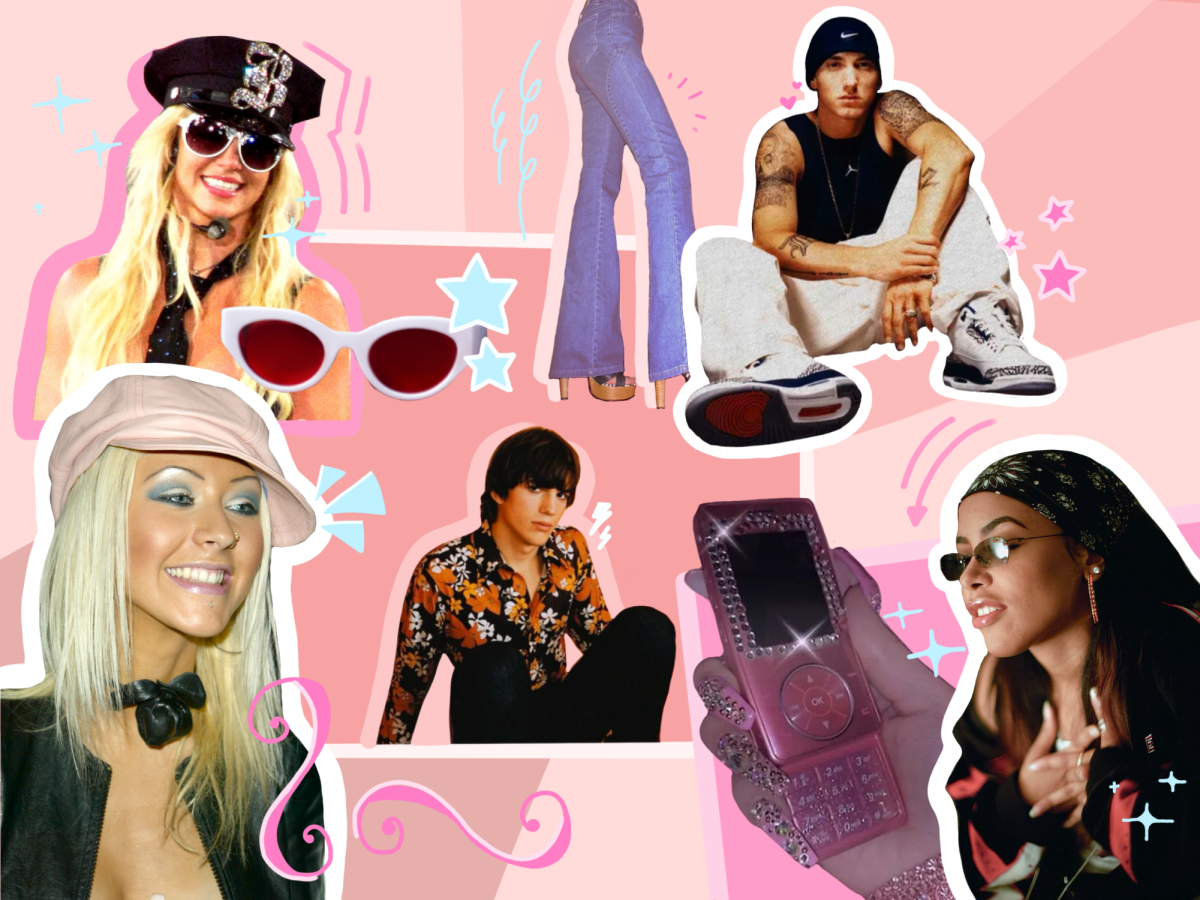If I could consult a Genie in a Bottle, I would wish to be taken to the 2000s, an era marked by low-rise jeans, silky pop music and a fixation on celebrity culture.
The Y2K aesthetic, a vibrant style rooted in the trends of the early 2000s, has experienced a massive resurgence, especially among younger generations. From bedazzled denim to holographic accessories, the Y2K wave has become a cultural phenomenon spanning across fashion, music and tech.
Trends like the Y2K aesthetic seem to fall out of fashion as quickly as they rise, raising the question of how the 2000s have remained so relevant in the trending world. The answer lies in a powerful intersection of nostalgia and consumerism. As brands profit off of the emotional pull of the past and social media projects the Y2K style appealingly, the 2000s aesthetic has become not just a fleeting trend but a thriving market force.
Nostalgia lies at the heart of the Y2K resurgence, serving as an emotional trigger increasingly utilized by brands to connect with consumers. This nostalgia marketing is the secret behind the Y2K craze. By creating a wistful, emotional longing, people are prompted to revisit past experiences and make purchases that reflect those memories.
Gen Z and Millennials, the driving consumers behind the Y2K revival, are both nostalgic for the Britney Spears and Christina Aguilera energy of the early 2000s while also seeking ways to express their individuality through personal style. This emotional pull has greatly influenced purchasing decisions, as people are naturally inclined to buy products that stir familiarity and comfort.
Gen Z’s affinity for vintage aesthetics has made them the perfect target for companies marketing Y2K-inspired products. Fashion brands have recognized the younger generations’ craving for authenticity and individuality, traits often reflected in vintage-inspired, nostalgic products. Consequently, the Y2K aesthetic has become a strong vehicle for self-expression, allowing young consumers to fuse nostalgia with their personal identities.
As a devoted follower of 2000s music, fashion and pop culture, I adore the iconic but personal appeal of the Y2K style. Whether I’m walking in low-rise flare jeans or sporting a cabby hat, it feels like traveling back to the time when Britney Spears dated Justin Timberlake and Eminem had beef with Christina Aguilera.
If it seems as if the Y2K aesthetic has exploded abruptly, much of it ties into the power of social media. Platforms like TikTok and Instagram are instrumental in spreading viral trends, and the Y2K aesthetic is no exception. Clips showcasing playful flip phones and mini skirts of the 2000s are crawling all over my FYP, and my friends often discuss the latest Y2K products they’ve seen on Instagram.
Although the viral nature of social media platforms tends to accelerate the speeds at which trends can rise and fall, the Y2K aesthetic has proven to be a resilient force in the marketplace. CNN notes that the digital era, epitomized by the early 2000s, continues to captivate younger consumers who feel a strong connection to the internet culture that defined the time.
Interestingly, K-pop has also played a major role in the prominence of Y2K fashion. I have purchased albums and streamed K-pop music for years, and the shift towards Y2K concepts for Korean singers has become extremely evident. Recently, NewJeans tapped into the streetwear vibe of the 2000s with oversized jerseys in their “Attention” music video. Le Sserafim also channeled the Y2K aesthetic, sporting denim mini skirts and corsets in their “UNFORGIVEN” performance.
Sustainable fashion has emerged as an additional force behind the success of the Y2K aesthetic. Consumers have grown increasingly concerned with the environmental impact of their purchases, leading to a boom in thrifting and second-hand shopping. As a result, vintage Y2K items, ranging from cargo pants to chunky platform shoes, are in high demand both in thrift stores and on resale platforms like Depop and Poshmark. The accessibility of the Y2K aesthetic has been pivotal to its longevity, as the style remains appealing to those who may not want to engage in fast fashion’s wasteful practices.
By tapping into the emotional pull of nostalgia and harnessing the power of social media, brands have transformed a fleeting cultural moment into a thriving consumer market. As the Y2K revival continues to evolve, it will remain a staple of fashion and pop culture, driven by both a desire for self-expression and the ever-present influence of marketing.
The abridged version of this article appeared in the Fall 2024 print edition. This is an uncut version.



